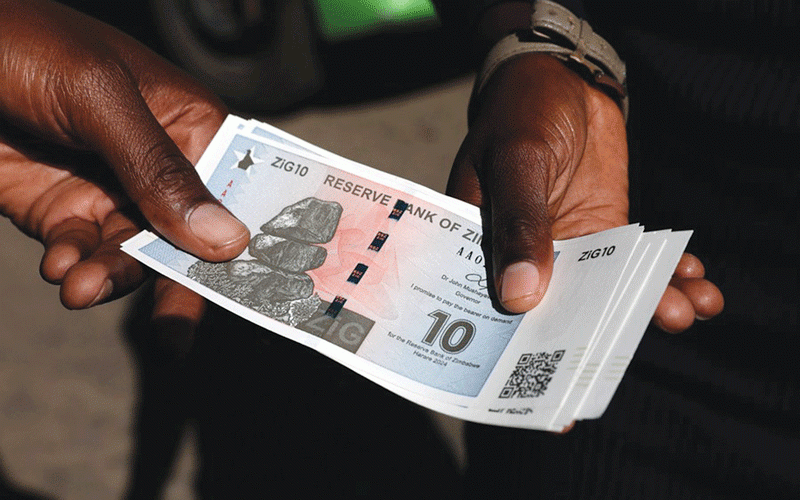
Since its introduction in April, the Zimbabwe Gold (ZiG) is holding its own against major currencies, especially the United States dollar, amid rising confidence in the local currency.
The structured currency, which was launched on April 5 and trading at 13,5616 to the United States dollar, was trading at 13,7241 to the United States dollar yesterday.
ZiG is part of a raft of measures to promote the use of the local currency, with the dollar accounting for about 80% of all local transactions, according to the Zimbabwe National Statistical Agency.
Reserve Bank of Zimbabwe (RBZ) governor John Mushayavanhu says the increased use of ZiG will result transactions in local currency reaching 30% this year and 40% in 2025 as the economy cruises on a dedollarisation path.
President Emmerson Mnangagwa recently said ZiG will in future become the sole legal tender.
The multicurrency regime has been legislated until 2030.
ZiG is backed by gold and cash reserves, with the central bank saying this week that it wants to bolster gold reserves to support the currency.
ZiG is expected to restore value in a currency unlike its predecessor, the Zimbabwe dollar, which had lost that critical function, depreciating by about 260% in the first three months of the year, according to the International Monetary Fund (IMF).
- So, is it a currency?
- All eyes on new RBZ boss as dollar collapses
- Structured currency is foredoomed
- A defining moment for Mushayavanhu
Keep Reading
For now, the currency is gaining confidence, accounting for the bulk of transactions in local supermarkets.
For example, schools that were forcing parents to pay school fees only in United States dollars are now accepting the ZiG.
For an economy that was long used to a sharp depreciation of the local currency, the confidence brought about by ZiG is being felt through price stability and the continued acceptance of the local currency.
This behoves the central bank to stay the course with its tight monetary policy thrust to support the use of local currency.
It should stick to its declaration that it will not pursue quasi-fiscal activities, blamed for previously dragging the economy into hyperinflation.
Mixed messages must be discarded and the central bank must use the tools at its disposal to support the local currency.
The central bank’s measures have done more to bolster the local currency than the wild goose chase on suspected foreign currency traders.
The Ministry of Finance, Economic Development and Investment Promotion must complement measures by the central bank by cutting the coat according to the size of the cloth.
There is no doubt that Treasury will face financing pressures this year due to the effects of the El Niño-induced drought.
In a recent Article IV assessment, the IMF warned that the cost of servicing the quasi-fiscal operations related debt and Treasury Bills, combined with weaker-than-expected revenues (despite strong efforts to raise them through policy measures) and drought-related spending, have opened a sizeable financing gap in the 2024 budget.
The financing gap needs to be closed in a way that does not undermine the monetary policy stance, it said.
It is the same fear shared by most Zimbabweans that when things get tough, authorities will throw away the reins as they come up with extraordinary measures to deal with an extraordinary situation.
We have travelled that road before.






